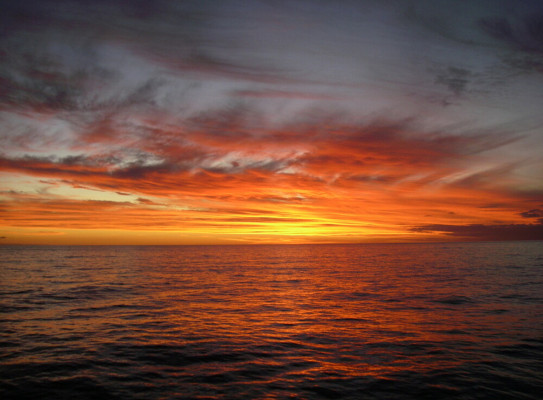
Making geologic Champagne on the Chatham Rise

GNS Science is testing the hypothesis that CO₂ is accumulated in geological reservoirs during interglacial periods and released at the end of glacial cycles in the form of sea level rise.
Overview
What earth system processes contributed to variations in atmospheric carbon dioxide (CO2) in past glacial terminations? How is carbon dioxide (CO2) released from the ocean floor?
The Chatham Rise, offshore from Aotearoa New Zealand, appears to hold key evidence of this mechanism. The evidence is in the form of sharp carbon and boron isotope anomalies observed in sediment cores at the end of the last glacial termination. The CO2 is likely to originate in limestone sequences of the subducted Hikurangi Plateau, a large igneous province, which subsequently migrates upwards towards the seafloor.
At the seafloor, and in the buried sediments, there are abundant small circular depressions, or pockmarks. These pockmarks may act as “valves” for the sudden release of CO2. This could explain one of the most puzzling mechanisms for regulation of CO2 in the late Pleistocene era.
GNS Science is collaborating with the University of Auckland, Texas A&M University, and the University of Southern California to see if their smoking gun hypothesis is right.
The project aims to
- investigate the mechanism responsible for the formation of these pockmarks
- determine whether the timing of their formation correlates with past glacial-interglacial cycles
- use data to develop an Integrated Ocean Drilling Program (IODP) proposal for further exploration in this region
To achieve these objectives
- this project is focused on acquiring geophysical datasets in a region of densely spaced, small pockmarks on the Chatham Rise. These include seismic, sub-bottom profiler and multibeam bathymetry datasets
The project
Geologic Champagne was one of several climate change projects awarded Marsden Fund investment in 2019. This project investigates a key component of the new hypothesis that release of CO2 from the seafloor during ice ages may have buffered atmospheric CO2 concentrations. In other words, the pockmarks act as a “valve” mechanism that controls CO2 release.
One of the key questions in paleo-climate research is why atmospheric CO2 concentrations remained in a range of 190-280 ppm throughout the ice ages in the last 800,000 years, in particular now that concentrations at >400 ppm are outside this range.
For this, a buffer is required for repeated uptake and release of CO2. It is commonly thought the deep ocean constituted such a buffer. However, evidence is now mounting that CO2 is instead repeatedly released from the seafloor.
Based on anomalies in sediment cores, the Chatham Rise and Bounty Trough east of the South Island appear to be key locations for such CO2 release. A huge part of this region is covered by seafloor pockmarks, crater-like features usually caused by sudden escape of fluids and gas. These pockmarks appear to have been formed repeatedly during ice ages through the release of CO2.
This project plans to test the hypothesis by illuminating the sub-seafloor with scientific seismic data and computer modelling.
In June-July 2020 scientists from the University of Auckland, GNS Science and the University of Otago spent 20 days on board the R/V Tangaroa acquiring a dense grid of 2D seismic lines, sub-bottom profiles and multibeam bathymetry data. These data will allow us to characterise the pockmarks at the modern-day seafloor and the underlying paleo pockmarks buried in the sediments.

Research project details
Duration
2020–2023
Funding platform
Marsden Fund $952,000
Status
Current
Programme leader
Ingo Pecher, PI, University of Auckland
Associate Investigators: Dr Jörg Bialas, GEOMAR - Helmholtz Centre for Ocean Research Kiel, Dr Jörg Bialas, GEOMAR - Helmholtz Centre for Ocean Research Kiel, Professor Richard Coffin, Texas A&M University, Dr Bryan Davy, GNS Science, Dr Jess Hillman, GNS Science, Professor Lowell Stott, University of Southern California, Dr Jenny Suckale, Stanford UniversityFynn Warnke, University of Auckland